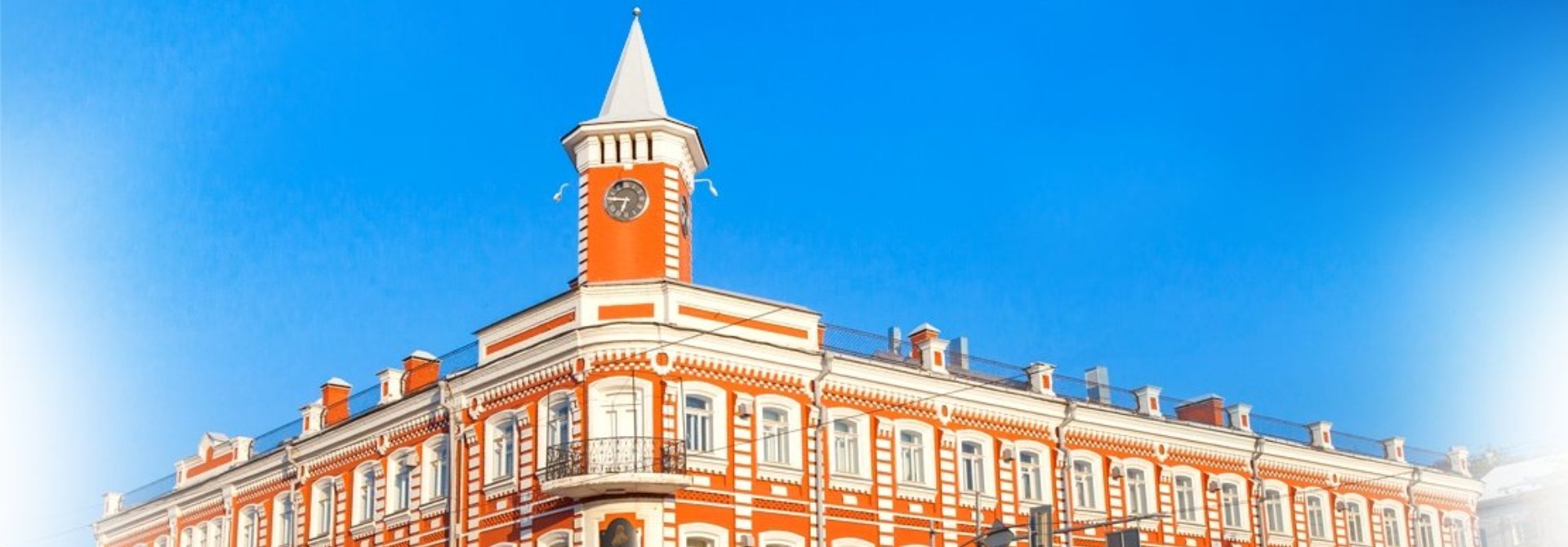
Spring is the time for nature to awaken from its long winter sleep. This is the time when everything around blooms again. And it's not just about flowers, but also about human feelings! When else, if not in May, to indulge in dreams and go on a wide variety of searches, including metaphorical ones ... And besides, spring is also a great time for new acquaintances! Today we invite you to get to know one of the greatest romantics of world classical literature - George Gordon Byron, the pride of the UNESCO creative city from the UK.
Polina Nikolaeva, the press secretary of the program, a young poet and writer from Ulyanovsk, will be your faithful and unchanging companion on the bookshelf.
Meet Lord D. G. Byron!

George Byron is a bright representative of the younger generation of British romantics. Do not be confused by such a distinctive feature of his works as “gloomy egoism” and pessimism, inspired by the imperfection of the real world and the people around it. The poet was tormented not only by spiritual torment, his life was full of bodily and moral suffering. And, nevertheless, he left such a noticeable mark in literature that a new trend was soon born, named after him "Byronism". His poetry was popular not only at home, in the 20s of the nineteenth century, the great Russian poets - Alexander Sergeyevich Pushkin and Mikhail Yuryevich Lermontov - were seriously fond of it.
Lord Byron's creative biography began in 1806, when he published his first book, Poems for the Occasion. A year later, he presented another collection of his poetry - Leisure Hours. Although society was not in a hurry to recognize the genius in the newly-minted poet, the preface with which Byron opened his second book deserved special criticism. In response to public attacks, the poet wrote a rather caustic satirical work "English Bards and Scottish Reviewers", which became even more popular than his poems.
In 1809 Byron decided to leave Britain. Along with him, he took his friend John Hobhouse with him. They visited Spain, Greece, Portugal, and this trip inspired the poet to create the work Childe Harold's Pilgrimage. This romantic narrative describes a traveler who had to face disappointment and the complete collapse of his youthful hopes for the perfection of the world. Naturally, Byron himself, his sorrows and sufferings, were hiding under the mask of this traveler.
"Childe Harold's Pilgrimage"
As we have already mentioned, in 1809-1811 Byron made a great trip, visiting Portugal, Spain, Greece, Albania, Turkey and Malta. Subsequently, these travel impressions formed the basis of the first two songs of the poem "Childe Harold's Pilgrimage", published in 1812 and brought the poet wide fame. The work of DG Byron is a vivid example of a romantic lyric-epic poem. However, it must be remembered that Byron as a poet took shape under the influence of the English classicists. The ideas of the Enlightenment also influenced him.
At the heart of Byron's aesthetics lies the enlightenment concept of the mind. Byron's favorite poet is Alexander Pope, the greatest representative of English classicism. In 1821, Byron wrote: “Pop’s greatest strength is that he is an ethical poet, and in my opinion such poetry is the highest kind of poetry in general, because it achieves in verse what the greatest geniuses have sought to achieve in prose.” However, these thoughts do not oppose Byron to the romantics, since both reason and the ethical principle act as an expression of the active presence in the art of the artist himself. His active role is embodied in the poet's work not only in the power of the lyrical principle, but also in the comparison of the individual and universal, the fate of man with the life of the Universe, which leads to the scale, sometimes titanism of images, in an uncompromising ethical program, on the basis of which the denial of reality acquires a universal character. . These traits make Byron a romantic. Romantic is the feeling of the tragic incompatibility of the ideal and reality, the opposition of nature, as the embodiment of a beautiful and great whole, to the corrupted world of people.
Byron's transition from classicism to romanticism is noticeable if we try to characterize the genre of the poem. For example, N.Ya.Dyakonova believes that Childe Harold tells about relatively little-known and rarely visited countries, cities and tribes. Such a task was quite compatible with the classical notions of a descriptive poem. The author's attention to the lofty, heroic aspects of reality, the understanding of the present in the light of the classical past, the loftiness of the poetic vocabulary and figurative system, the predilection for abstract concepts and ancient allusions were in the tradition of classic poetry.
But Byron can also be considered an innovator! Despite the connection with the enlightenment and classic traditions, from the very first words, readers felt something completely new, disturbing, special. They were struck by the appearance of the pilgrim Harold, not endowed with any virtues, sharply unlike the "real" hero.
The central problem of the work is the problem of freedom of the individual, the people. In the first and second songs of Childe Harold, the concept of freedom is bifurcated. First, it is associated with the liberation of entire peoples from enslavers. In the first song of Childe Harold, Byron shows that Spain, captured by the French, can be liberated only by the people themselves, by the whole people. In revealing the problem of freedom from this side, the author of the poem is interested in personality as the embodiment of tyranny. The tyrant humiliates the dignity of the people, and only a shameful dream, laziness, humility of the people allow him to stay in power. The enslavement of other peoples is beneficial only to a few tyrants. But the entire nation-enslaver bears the blame for it. Most often, in revealing national guilt, the poet resorts to the example of England, as well as France and Turkey.
Secondly, Byron addresses the problem of individual freedom. The first stage of the incarnation of a free personality is associated with the image of Childe Harold, who is the first variety of a whole literary type, called the Byronic hero. If we compare Harold with the Corsair, Gyaur, Cain, Manfred and other heroes of Byron's poems and dramas, then we can highlight the characteristic features of this literary type. He was soon fed up with life, he was seized by the deepest melancholy, "a disease of the mind." He lost touch with the outside world, a terrible feeling of loneliness became familiar to him. Egocentrism brought to the limit leads to the fact that the hero ceases to feel pangs of conscience, committing bad deeds, he never condemns himself, he always considers himself right. Thus, a hero free from society is unhappy, but independence is dearer to him than peace, comfort, and happiness. The “Byronic hero” is uncompromising, hypocrisy is alien to him, since ties with a society in which hypocrisy is a way of existence are destroyed. Only one human connection is recognized by the poet as possible for his free, non-hypocritical and lonely hero - a feeling of great love, growing into an all-consuming passion.
These traits are manifested in one way or another in the character of Childe Harold. This image is in a complex relationship with the image of the author, the actual lyrical hero: sometimes they exist separately, sometimes they almost merge. “A fictional character was introduced into the poem in order to connect its separate parts,” Byron wrote about Childe Harold in the preface to the poem.
It may seem that at the beginning of the work, the author's attitude to the hero is close to satirical: Harold is "a stranger to both honor and shame!", "an idler corrupted by laziness." And only the “disease of the mind and heart!”, “Deaf pain”, the ability of Harold to critically look at the lies reigning in this world where he lived, which arose from the satiety of secular life only by the age of 19, make him interesting for the poet.
The composition of the poem is based on new, romantic principles. The clear core is lost. Not the events of the hero's life, but his movement in space, moving from one country to another (actually "pilgrimage") determines the delimitation of parts. At the same time, the hero’s movements are devoid of dynamics, he does not linger anywhere, not a single phenomenon captures him, in no country does the struggle for independence excite him so that he stays and takes part in it (true dynamics would have an effect in this stop - dynamics the inner world of the hero, characteristic of the genre of a romantic poem).
The nature of the relationship between the epic and lyrical principles gives the poem a special complexity. When we characterize the relationship between the hero and the people, the epic content of the people's struggle is revealed mainly through the author's emotional attitude. The movement from the lyrical theme of a lonely hero to the epic theme of the people's struggle is given as a change in the emotional spheres of the hero and the author. There is no synthesis between the lyrical and epic beginnings. On the contrary, when attention is shifted to the relationship between the hero and the author, such a synthesis of the epic and lyrical layers is revealed, so it is not always possible to accurately determine who owns the lyrical thoughts - the hero or the author. The epic layer of the journey takes on a lyric-romantic character due to the images of nature, and above all the sea - a symbol of an uncontrollable and independent free element.
A few years later, Byron wrote a continuation of the poem: the third canto (in Switzerland, in 1816) and the fourth (in Italy, in 1818).
In the third song, the poet refers to the turning point in European history - the fall of Napoleon. Childe Harold visits the site of the Battle of Waterloo. And the author reflects on the fact that in this battle both Napoleon and his opponents defended not freedom, but tyranny. In this regard, the theme of the Great French Revolution arises, which once put forward Napoleon as a defender of freedom. Byron highly appreciates the activities of the enlighteners Voltaire and Rousseau, who ideologically prepared the revolution.
In the fourth song, the main problem is the role of the poet, art in the struggle for the freedom of peoples. Here the image of Childe Harold, alien to events and popular interests, finally leaves the poem, in the center is the image of the author. The poet compares himself to a drop that has poured into the sea, to a swimmer who is related to the sea element. This metaphor becomes understandable if we consider that the image of the sea embodies the people who have been striving for freedom for centuries. Thus, the author in the poem is a citizen poet who has the right to exclaim: “But I lived, and I did not live in vain!”
In the footsteps of Byron in Russian literature
Without any doubt, each of you knows that Byronism had its influence on the work of Alexander Sergeevich Pushkin. This is most noticeable in the early works. According to the poet himself, he "went crazy" about Byron and read to them while living in the south. Pushkin especially liked the Byronic oriental flavor and romantic savage heroes, the features of which he gave to the characters of Gypsies, The Prisoner of the Caucasus, and The Fountain of Bakhchisarai.
However, the sharp contrasts between the characters and scenes of "Eugene Onegin", the compressed and dramatic action, as well as the author's witty remarks, which made the text of the poem so charming. Pushkin clearly borrowed some of Byron's techniques.
In any case, dear reader, we recommend that you also touch the work of George Byron. You can easily find his books in any city library, and we will be happy to receive feedback from you and, of course, talk about literature!




